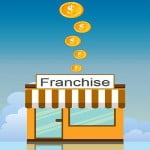image: http://cdn.business2community.com/wp-content/uploads/2017/01/workplace-1245776_1280.jpg.jpg

So…how do you hire a web designer?
What should be on your list so everything goes according to your plan?
Well, let me show you 5 things to consider when looking for a web designer.
Start with a design brief
A design brief is a like a cookbook.
It has a list of ingredients and a process to show you how to prepare the project.
Your designer will ask for this so he or she can finish the project on time.
Here’s a list of information typically found in a design brief:
- Info about your company
- Project information
- End results or deliverables
- Project scope
- Budget
- Deadline
Once done, it’s time to look for a web designer.
This could be a little bit tricky.
Sometimes, a designer can get the job done. However, there are times when full-scale development is needed.
So how would you know if you need a designer or a developer?
Let’s find out.
Developer, Designer or both?
How do you differentiate a developer from a designer?
Let’s imagine a car manufacturing company.
A designer is responsible for the design aspects of your site.
He or she should be artistic; with a good eye for color, fonts, layouts, copy, and branding.
A designer creates mockups (sketches of how your website will look) which you will hand over to the developer for implementation.
In our example, a designer gives you the sketches of a new model complete with the engine design, as well as the car’s interior and exterior.
You hire a designer because:
- You want the site to be a reflection of your brand – not just another website with a cookie-cutter design
- You want to get ahead of the competition – a designer knows how to make your site pop by blending the best design and SEO best practices
On the other hand, a developer turns the designer’s idea into reality.
He’s responsible for sourcing the materials and equipment to make the site come alive.
That means finding out the type of CMS to use (i.e. WordPress, HubSpot, Drupal, etc.) and the infrastructure needed to make it run.
You hire a developer because:
- You’d like to put more functionality into your site, like a shopping cart
- You understand the value of someone who can keep your site up to date
- You just want your site to be up and running even while you’re on a holiday cruise somewhere in the Caribbean
Before we proceed any further, let me explain how the hiring process works.
I mention “Designer” in this article as if it’s a singular person (like me). In reality, you may be working with an agency or a single person.
Recommended for YouWebcast, January 24th: The Science of Attention and Growth Marketing
If you hire a freelancer, ask about their availability or how they manage projects.
A typical freelancer handles 2 or 3 projects at a time. So you have to be specific about the deadline. Ask them if they can commit to it; if they can’t, look for someone else.
If you hire an agency, make sure the designated designer is someone who is accessible. Do you know why? Because some agencies outsource their projects overseas. In this scenario, a quick, timely response could be a challenge.
So make sure the agency can give a backup designer to answer your queries during your working hours.
There are a number of ways to promote your job.
You can visit bidding sites such as Upwork or online classifieds like Craigslist, but I wouldn’t recommend them.
The truth is, bidding sites pit the cheapest prices against each other without taking into consideration the freelancer’s expertise.
With that in mind, I highly recommend that you contact them through their website – which I’ll discuss next.
Visit their Website
Take note of design elements like fonts, color, copy and layout. Then ask yourself, “Is this how I want my site to look?”
All freelance designers and agencies maintain an online portfolio.
Check out previous projects similar to yours. This will give you a teaser of what you can expect once both of you agreed to work together.
Remember, web designers are like doctors, too. They’ve got “specializations”. For example, say you’ve got an e-Commerce business that needs a makeover.
There are two candidates: one is a freelancer who has designed brochure sites for consultants and artists, the other is an agency that offers e-Commerce web design complete with shopping cart solution and SEO services.
The choice is obvious, right?
Lastly, I encourage you to talk out to their previous and current clients. Ask about their experience working with the designer or agency.
Take note of their answers to the following items:
- Communication
- Expertise
- Ease of working together
- Their turnaround time
Better yet, throw this simple question:
“Are you looking forward to working with the designer / agency again?”
Their answer will definitely help you decide whether to move forward or look for someone else.
Before we move on I want to be clear on something, if you noticed, I haven’t talked about the pricing plan.
That’s because budgets, quotes, and actual costs can vary depending on your needs, turnaround time and the designer you wish to work with.
My suggestion is to keep an open mind in terms of pricing. Remember, you’re not paying for the work. But rather, for the experience and value the designer brings to your business.
Do they have a chosen platform?
I’ll make this simple for you.
A platform is the “canvas” in which the designer paints the website. As of this writing, we’re talking about 100+ platforms right now.
The most famous of these platforms are WordPress, Drupal, and HubSpot. (Note: Site Builder Report has a cool breakdown of available website builders. You should check it out.)
The design brief will indicate which platform is appropriate for the project, and you should look for a designer who has experience working on it.
The most important aspect of all is …
Communication.
I can’t stress this enough.
I’ve seen projects gone horribly wrong because the client and the designer can’t work out their differences.
So how do you work on this?
It’s easy.
First, avoid asking for changes halfway through the project. Always remember that even a simple tweak could be huge for the designer.
My suggestion is to have an agreement on how to handle revisions. You can do this by collaborating with the designer. Both of you agrees on how many revisions and how often you should meet for review.
Second, trust the designer’s creativity. And that means listening to suggestions and recommendations – even if it means letting go of your pet ideas to begin with.
Third, provide examples.
Telling a designer you want a “beautiful” website won’t cut it. As much as possible, provide 3 to 5 websites you wish to reference and explain why you love it. Likewise, provide examples of websites that you don’t like and explain why.
Fourth, agree on the frequency of updates and stick with it.
Fifth, give useful feedback. If you find something wrong during the project, then say it right away. And then explain the reason why you don’t like it.
On to you …
Throughout this article, I’ve been showing you how to work with a web designer. Hopefully, this knowledge will help you understand the importance of planning.
If there’s only one lesson I want you to take from here, it is having a clear design brief. Because everything starts from there.
Read more at http://www.business2community.com/web-design/keep-mind-hiring-web-designer-01752546#C41iuVgxO9vB8BGD.99
[“source-ndtv”]











